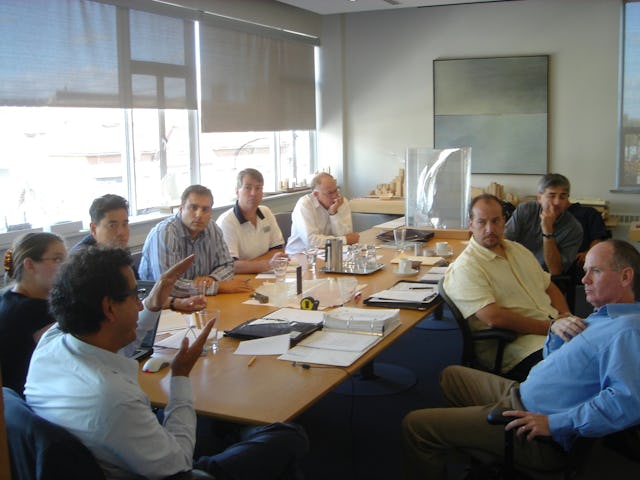Fabrication begins on components for Baha'i temple in South America
TORONTO, Canada — After months of testing a key computer model for the unique Baha'i house of worship to be built in Chile, architects have announced that fabrication of components for the structure is now beginning.
The milestone comes just as the design for the building received a coveted architectural award - a citation from Architect magazine in its annual Progressive Architecture competition. The awards, established in 1954, are among the most prestigious honors for projects that have not yet been built.
The Baha'i temple in Chile is one of eight projects from around the world that received an award or citation in the program this year.
"For architects, it's the award that recognizes designs that go in a new direction," said Siamak Hariri of Hariri Pontarini Architects of Toronto, the firm that designed the house of worship and is overseeing its construction. Representatives of the firm traveled to New York last month for the awards ceremony.
Mr. Hariri describes the building as a "temple of light." The structure will be created by nine translucent alabaster and cast-glass "wings," which during the day will allow sunlight to filter through. At night the temple will emit a warm glow from the interior lighting.
The huge segments that will form the sides and dome of the building are being fabricated in Toronto and then will be transported to Chile.
"It's a little bit unorthodox, but it's the most cost effective way to do it," Mr. Hariri said of doing part of the work off-site. Five countries, including Chile, were considered for the fabrication, but the Canadian bid turned out to be the least expensive, he said.
Extensive and detailed testing, now in its final stages, has proved that a key computer model for the temple "was 100 percent accurate," he said. This was exciting news to the architects because it means the project now proceeds to actual fabrication without significant adjustments, he said.
Part of the testing involved fabrication of a one-sixth scale model of one of the steel frames that will form the sides of the temple.
The engineering software used for the model is often employed in the aerospace industry but rarely has been used by architects, Mr. Hariri said.
It will take two to three years to complete the pieces of the temple that are being fabricated in Canada. At the actual site in Chile, construction of the foundation is tentatively set to begin next October.
The temple in Santiago will be the eighth such Baha'i house of worship. All have a dome and nine sides but otherwise differ greatly in appearance. The other temples are located in India, Germany, the United States, Australia, Panama, Uganda and Samoa.
The house of worship in Chile, like the others, will be financed entirely by voluntary contributions from Baha'is around the world. The cost of the Chile project has been estimated at US$27 million.
In the Baha'i scriptures Baha'u'llah designates the houses of worship as gathering places for prayer and meditation, which in the future are envisioned to be the center of a group of buildings housing social, humanitarian, educational and scientific institutions.
